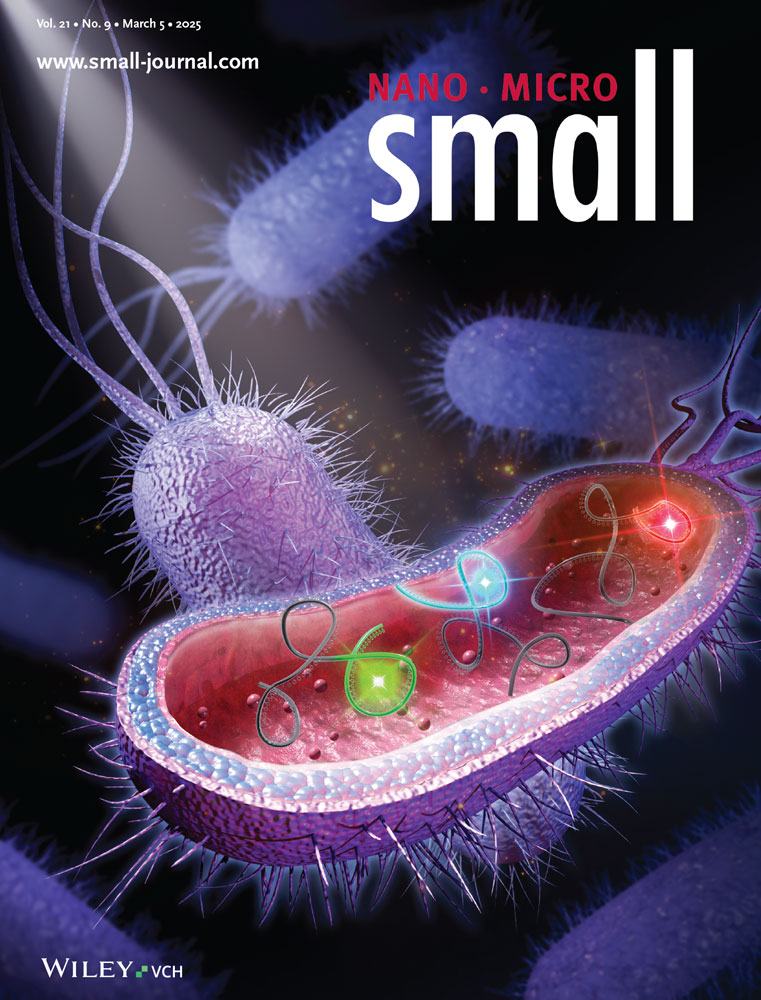Hot Nanogap Networks-In-Triangular Nanoframes: A Strategy for Positioning Adsorbates Near Hot Spots
Abstract
This study reports the synthesis of plasmonic hot nanogap networks-in-triangular nanoframes (NITNFs), featuring narrow intraparticle nanogap networks embedded within triangular nanoframes. Starting from Au nanotriangles, Pt NITNFs are synthesized through a cascade reaction involving simultaneous Pt deposition and Au etching in a one-pot process. The Pt NITNFs are then transformed into plasmonically active Au NITNFs via Au coating. The near-field focusing capabilities of the Au NITNFs are tailored by fine-tuning the void area fraction down to 3.9%, resulting in the formation of narrow nanogaps of ≈1 nm. This optimization enables the successful implementation of single-particle surface-enhanced Raman scattering (SERS) measurements. Then, monolayer Au NITNFs films on Al substrates are prepared, which enabled weakly adsorbing species to be positioned close to the hot spots of the NITNFs by anchoring them to the underlying Al substrates. As a representative sensing application, the SERS-based detection of gas-phase dimethyl methylphosphonate (DMMP) using a film of plasmonic NITNFs on an Al substrate exhibits outstanding performances, achieving a limit of detection of 5 ppm and a detection time of 120 s.
Conflict of Interest
The authors declare no conflict of interest.
Open Research
Data Availability Statement
The data that support the findings of this study are available from the corresponding author upon reasonable request.




